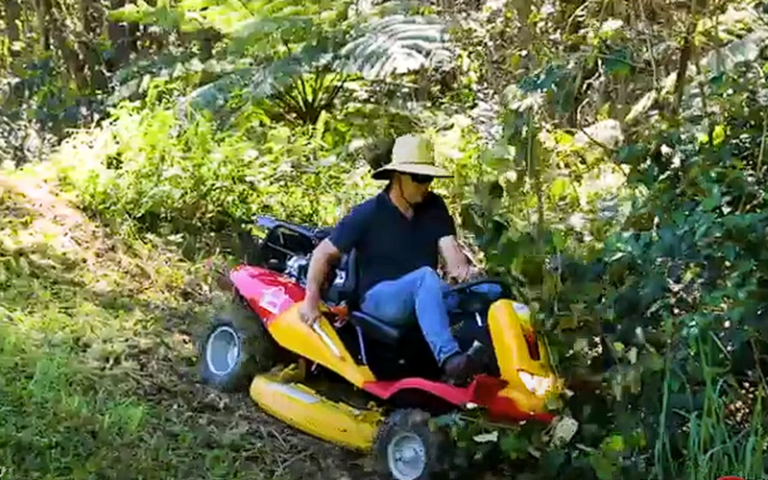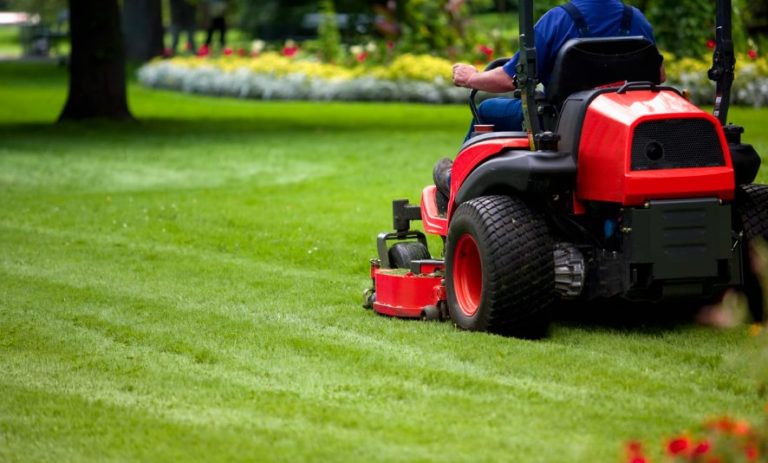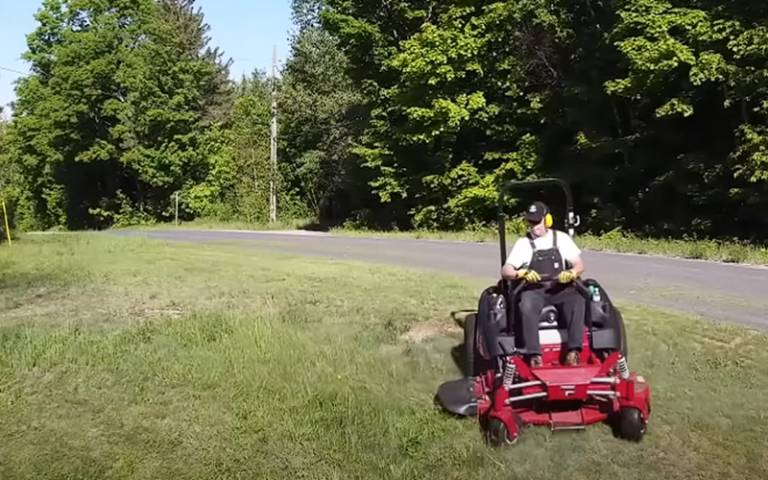Zero Turn Mower Maintenance: Keep Your Mower in Top Shape
Maintaining a zero-turn mower is crucial for ensuring its longevity, efficiency, and optimal performance. Regular upkeep not only prolongs the life of your equipment but also ensures a smooth and effective mowing experience. In this comprehensive guide, we’ll walk you through the essential maintenance tasks for your zero-turn mower, helping you keep your machine in peak condition.
Why Zero Turn Mower Maintenance Matters
Why Zero Turn Mower Maintenance Matters
Zero-turn mowers are known for their maneuverability and speed, making them a popular choice for both residential and commercial lawn care. However, their complex design and powerful engines require regular maintenance to operate efficiently. Neglecting maintenance can lead to reduced performance, increased fuel consumption, and costly repairs. To ensure you’re getting the best performance, especially if you have challenging terrains, consider investing in the best zero turn mowers for hills. Regular upkeep will help these mowers perform at their best.
Key Maintenance Tasks for Zero Turn Mowers
1. Regular Oil Changes

Changing the oil in your zero-turn mower is one of the most critical maintenance tasks. Oil lubricates the engine’s internal components, reducing friction and preventing overheating. Over time, oil breaks down and accumulates contaminants, which can lead to engine damage.
How to Change the Oil:
- Prepare the Mower: Ensure the mower is on a flat surface. Turn off the engine and allow it to cool.
- Drain the Old Oil: Locate the oil drain plug, place a pan underneath, and remove the plug to drain the old oil.
- Replace the Oil Filter: Remove the old oil filter and install a new one.
- Add New Oil: Refill with the recommended oil type and quantity as specified in the owner’s manual.
- Check Oil Level: Use the dipstick to ensure the oil level is correct.
Frequency: Check the oil level before each use and change the oil every 50-100 hours of operation or as recommended by the manufacturer.
2. Clean or Replace Air Filters

The air filter prevents dirt and debris from entering the engine, ensuring it runs smoothly. A clogged air filter can reduce engine efficiency and increase fuel consumption.
How to Clean or Replace the Air Filter:
- Locate the Air Filter: The air filter is typically housed in a removable cover on the side of the engine.
- Remove the Filter: Take out the filter and inspect it.
- Clean or Replace: If the filter is dirty, clean it with compressed air or replace it with a new one.
- Reinstall: Place the cleaned or new filter back into the housing.
Frequency: Inspect the air filter every 25-50 hours of operation and clean or replace it as needed.
3. Check and Sharpen the Blades

Sharp blades ensure a clean, even cut and reduce the strain on the engine. Dull blades can tear the grass, leading to an uneven appearance and increased lawn stress.
How to Check and Sharpen Blades:
- Remove the Blades: Use a wrench to remove the blade bolts.
- Inspect the Blades: Check for damage or dullness.
- Sharpen or Replace: Sharpen the blades using a sharpening tool or take them to a professional. Replace the blades if they are excessively worn or damaged.
- Reattach: Reinstall the blades securely.
Frequency: Check the blades every 10-15 hours of use and sharpen or replace them as necessary.
4. Inspect and Maintain the Belts
Belts drive various components of your zero-turn mower, including the blades and transmission. Worn or damaged belts can lead to poor performance and potential breakdowns.
How to Inspect and Maintain Belts:
- Inspect the Belts: Look for signs of wear, such as cracks or fraying.
- Adjust Tension: Ensure the belts are properly tensioned according to the manufacturer’s specifications.
- Replace if Needed: If a belt is damaged, replace it with a new one.
Frequency: Inspect the belts every 25-50 hours of operation and replace them as needed.
5. Check Tire Pressure
Proper tire pressure ensures optimal traction and performance. Uneven tire pressure can cause uneven cutting and strain on the mower’s engine.
How to Check and Adjust Tire Pressure:
- Check the Pressure: Use a tire gauge to measure the pressure in each tire.
- Adjust as Needed: Inflate or deflate the tires to match the recommended pressure listed in the owner’s manual.
Frequency: Check tire pressure before each use.
6. Clean the Deck
Grass clippings and debris can accumulate under the mower deck, affecting performance and potentially causing rust.
How to Clean the Deck:
- Turn Off the Mower: Ensure the engine is off and the key is removed.
- Clean Under the Deck: Use a broom or a high-pressure water nozzle to remove grass clippings and debris.
- Inspect for Damage: Look for any signs of wear or damage and address them as needed.
Frequency: Clean the deck after each use, or at least once a week during the mowing season.
7. Check the Fuel System
A clean and properly functioning fuel system ensures efficient engine performance and reduces the risk of stalling.
How to Check the Fuel System:
- Inspect Fuel Lines: Look for cracks or leaks in the fuel lines.
- Check Fuel Filter: Replace the fuel filter as recommended by the manufacturer.
- Add Fuel Stabilizer: If you’re storing the mower for an extended period, add a fuel stabilizer to prevent the fuel from degrading.
Frequency: Check the fuel system before each use and replace the fuel filter every 100-150 hours of operation.
Seasonal Maintenance Tips
Spring:
- Perform a thorough inspection after winter storage.
- Change the oil and air filter.
- Sharpen the blades and check tire pressure.
Summer:
- Monitor oil levels and change as needed.
- Clean the deck regularly.
- Inspect belts and sharpen blades as necessary.
Fall:
- Prepare the mower for winter storage.
- Clean the fuel system and add a stabilizer.
- Perform a final inspection and maintenance.
Winter:
- Store the mower in a dry, sheltered area.
- Remove the battery if applicable and store it in a cool, dry place.
- Check for any issues before the next mowing season.
Conclusion
Proper maintenance of your zero-turn mower is essential for keeping it running smoothly and efficiently. By following these maintenance tips, you’ll ensure your mower remains in top shape, providing reliable performance and a pristine lawn. Regular upkeep not only extends the life of your equipment but also enhances your overall mowing experience.
Remember, always consult your mower’s owner’s manual for specific maintenance recommendations and schedules. With the right care, your zero-turn mower will serve you well for many years to come.

Michael Anderson is a lawn care professional with many years of experience in the industry. His journey began in his family’s landscaping business, where he developed a passion for gardening and outdoor maintenance. Michael specializes in helping homeowners tackle challenging terrain, focusing on the best equipment and techniques for effective lawn care.
In 2024, he founded bestzeroturnmowerforhills.com to share his knowledge and help others find the ideal zero turn mower for hilly landscapes. His commitment to providing unbiased reviews and practical advice has made him a trusted resource for gardening enthusiasts.






